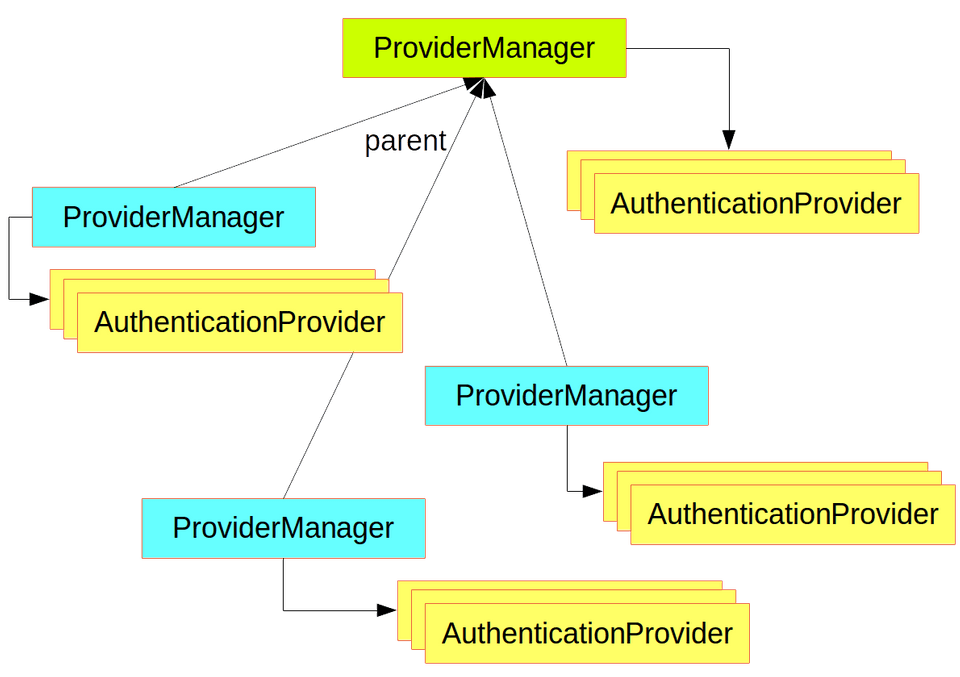스프링 시큐리티 구조 (spring security architecture) of Spring Boot
Spring Security Architecture
스프링 부트는 안전한 애플리케이션을 위해 기본 동작을 제공하기에 많이 추천 한다.
모든 원리는 스프링 부트 뿐만아니라 모든 어플리케이션에 동일하게 적용 한다.
Authentication (인증) and Access Control (접근 제어)
보안 애플리케이션은 두 가지 이상의 독립적인 문제들이 있다.
- authentication (Who are you?)
- authorization (what are you allowed to do?) = access control
authentication 과 authorization은 헷갈릴 수도 있기 때문에 access control 으로 부르는 사람도 있다.
스프링 시큐리티 구조는 authorization(인가)으로 부터 authentication(인증)이 분리 되어 있고, 둘 다 확장할 수 있는 전략을 가지고 있다.
Authentication (인증)
주요 전략은 AuthenticationManager 인터페이스를 사용해 하나의 메소드에서 구현하는 것 이다.
public interface AuthenticationManager {
Authentication authenticate(Authentication authentication)
throws AuthenticationException;
}AuthenticationManager의 가장 일반적인 구현은 AuthenticationProvider 인스턴스 체인에 위임한 ProviderManager 이다. AuthenticationProvider는 Authentication Type을 얻을 수 있는지 지원하는 쿼리를 제공
public interface AuthenticationProvider {
Authentication authenticate(Authentication authentication)
throws AuthenticationException;
boolean supports(Class<?> authentication);
}ProviderManager는 같은 어플리케이션내에서 다양한 인증 메커니즘을 제공할 수 있다. 그 방법은 AuthenticationProviders의 체인 구현을 통해 할 수 있다.
ProviderManager는 Optional로 모든 providers에서 null을 찾는다. null이 발생하게 되면 Authenticaion의 결과는 AuthenticaionException(Runtime Exception)을 발생하게 한다.
어플리케이션은 자원 보호를 위해 로직을 그룹화를 할 수 있다.
각 그룹은 전용 AuthenticationManager 가질 수 있다.
종종 각 ProviderManager들은 부모를 공유를 하는데 글로벌 자원으로 모든 provider에 대해 fallback을 해준다.

Customizing Authentication Managers
AuthenticationManagerBuilder를 사용해서 in-memory, JDBC or LDAP 로 user details or custom UserDetailsService를 설정 할 수 있다.
global(parent) AuthenticationManager configuring을 통한 예제
@Configuration
public class ApplicationSecurity extends WebSecurityConfigurerAdapter {
... // web stuff here
@Autowired
public void initialize(AuthenticationManagerBuilder builder, DataSource dataSource) {
builder.jdbcAuthentication().dataSource(dataSource).withUser("dave")
.password("secret").roles("USER");
}
}출처 https://spring.io/guides/topicals/spring-security-architecture